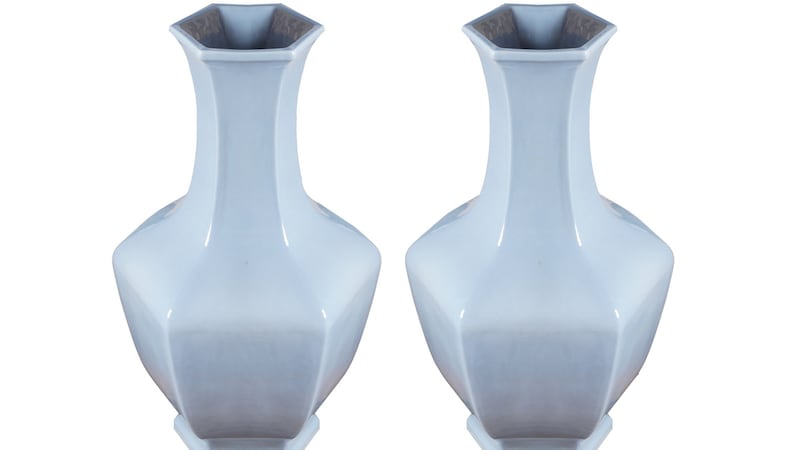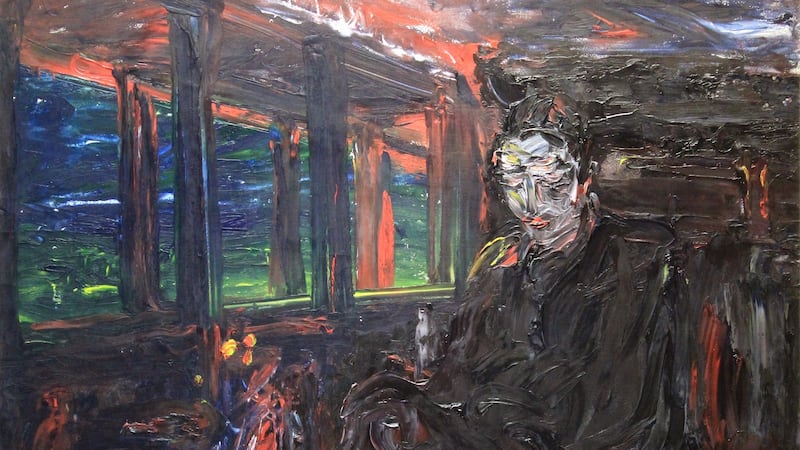The past 12 months saw a recovery in the Irish market and a continuing boom in international art and antique sales. Auctioneers face 2016 with confidence for the first time since the economic crash in 2008. But the year ahead will likely be as unpredictable as the one just past.
The Irish art market
All the main auction houses reported a recovery in demand for Irish art during 2015 – in line with the economic recovery. The big end-of-year auctions had sold rates averaging 80 per cent although prices remain much lower than during the boom years.
Auctioneers complained of a shortage in the supply of top-quality art and a frequently-cited reason was that owners were reluctant to sell – perhaps for the same reason that purchasers want to buy – with deposit rates so low, many collectors seem to regard art as a good ‘alternative’ investment.


The highest price paid for a painting at auction in Ireland in 2015 was for Man in a Train Thinking by Jack B Yeats which sold for €220,000 at a de Veres auction in December.
The runner-up was Morgan O’Driscoll Auctioneers where
Business
– also by Jack B Yeats – made €210,000 in December. At
, the top lot was
Portrait of Gladys Cooper
by Sir
which sold for €175,000 in May. At
, the highest price achieved was for
Roundstone, Connemara
by Jack B Yeats which sold for €58,000 in May. Almost overnight,
became one of the most expensive living Irish artists. One of his paintings, featured on
The Late Late Show
and titled
The Power
sold for €
77,500 at Morgan O’Driscoll’s art auction in the RDS in May and Flatley later held his debut selling exhibition in London.
Irish antiques, collectibles and jewellery auctions
Not for the first time, the highest price paid at auction was achieved for a Chinese lot. At Sheppard's auction of the contents of Capard House, Rosenallis, Co Laois, in September, a couple who had travelled from Beijing especially for the auction, successfully bid €560,000 for Chinese porcelain. In February, a 'Native American' outfit, brought home to an aristocratic 'Big House' in Co Kilkenny more than 100 years ago, sold for €320,000 at Fonsie Mealy Auctioneers, trouncing the top pre-sale estimate of €6,000.
The outfit (a hide Poncho War Shirt, “with original hand painted native designs”; hide leggings; an original-hand painted and beaded Head Dress with feathers; and a “sheep hide, “bead-decorated purse”) was bought on the telephone by an unnamed bidder in the US.
The auction was notable for a second classic ‘sleeper’ – a 12-inch high 19th-century Chinese hardwood table spice carriage that sold for €
41,000 – 41 times the top estimate; it was originally in “the Collections at No 9 Fitzwilliam Square and Tassagart House, Saggart, Co Dublin”.
Adams said that “for the first time in several decades” the top price achieved during the year was not for a painting or an antique but a “1930s’ Cartier diamond necklace” that sold for €
210,000 in May.
In March, Whyte’s sold a “learner’s guitar” owned in the 1970s by Dublin schoolboy
, now The Edge of U2, for €
21,000, over four times the top estimate, to a telephone bidder in Hollywood.
Irish sales in London Sotheby's reinstated the 'Irish Sale' sale after a four-year gap – the only London auction house to hold an auction devoted exclusively to Irish art – and the top price was achieved for Japanese Switzerland (a confusingly titled painting of his wife and step-daughter in the Swiss Alps) by Sir John Lavery that made £509,000 (about €693,000). Among other interesting Irish items that sold in London: in February at Sotheby's sale titled 'Of Royal & Noble Descent' – an auction of aristocratic heirlooms – a gilt-bronze 'surtout de table' (table centrepiece), made in circa 1805 for the Butler Family of Kilkenny Castle, sold for £18,750 (about €25,000).
At Bonhams, a first-edition copy of Lismore, Co Waterford-born scientist Robert Boyle's The Sceptical Chymist – published in London in 1661 – sold for £362,500 (about €493,000) – the highest price ever paid at auction for a book by an Irish-born writer.
July's auction of Old Master paintings at Christie's went ahead but without six paintings from Russborough House in Co Wicklow – that were withdrawn following a public outcry. The paintings – including two by Rubens – had been consigned to auction by the Alfred Beit Foundation to help create a €15 million endowment fund to pay for ongoing upkeep and conservation of the stately home.
Currently, it is understood that negotiations are being finalised for three of the paintings to be acquired by philanthropic donors – so called ‘white knights’ – for donation to the National Gallery of Ireland under a tax-incentive scheme, but the fate of the other three (the second Rubens and two paintings by Guardi) remains to be decided in 2016.
The global art market
The boom in the international art market continued in 2015 with world-record auction prices established for both painting and sculpture in May.
At Christie's, New York, Picasso's 1955 painting Les Femmes D'Alger (Version 'O'), from his series known in English as The Women of Algiers, sold for $179.4 million (about €158 million) to become the most expensive painting – or any work of art – ever sold at auction.
Christie's also achieved a new world-record price for sculpture when Giacometti's L'homme au doigt (Pointing Man) sold for $141.3 million (about €128 million).
Find of the year In July, a man cutting furze bushes in a field beside his holiday cottage in Co Wicklow found a black bin bag containing stolen paintings by leading Irish artists – including Sir John Lavery, Paul Henry and Jack B Yeats – with an estimated value of €180,000. They were returned to their owner by gardaí.
Quote of the year Speaking to Bonhams auctioneers ahead of the sale, last month, of the contents of his south Yorkshire stately home, Hooton Pagnell Hall owner Mark Warde-Norbury explained: “We have five grand pianos and six grandfather clocks. We have to clear some things out in order to move forward.”
Music to the ears of auctioneers everywhere.











